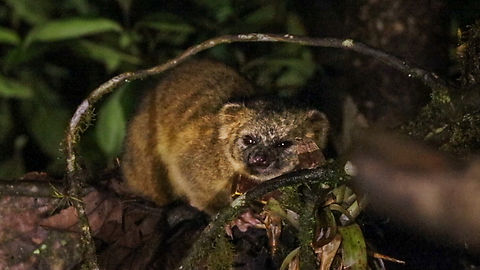
Appearance
The olinguito is distinct from the other species within the genus, popularly known as "olingos", and also from the kinkajou. Its average weight is 900 grams, making it the smallest procyonid. The animal is an omnivorous frugivore that eats mainly fruits, but also insects and nectar; this diet results in feces the size of small blueberries. The olinguito is thought to be solitary, nocturnal and moderately reclusive. Olinguitos appear to be strictly arboreal. They have a single pair of mammae, and probably produce a single offspring at a time.Naming
On 22 May 2014, the International Institute for Species Exploration declared the olinguito as one of the "Top 10 New Species of 2014" among species discovered in 2013. It is the first new carnivoran mammal described in the Western Hemisphere in 35 years.Distribution
Specimens of the species have been identified from the Andean cloud forest stretching from western Colombia to Ecuador, at elevations of 1,500 to 3,000 metres, which is the highest known range of any member of the genus "Bassaricyon". Its discovery was confirmed in the wild and announced on 15 August 2013. The species is not considered to be immediately at risk, but it is estimated that over 40 percent of the animal's potential range has been deforested.Status
The olinguito may be at risk in the future due to deforestation and urbanization. Since the natural habitat of the olinguito is at higher elevations, this means that its "cloud forest habitat" definitely needs to be protected in order to optimize this species' probability of survival. As of now, no strict efforts are known to be in place in order to reduce habitat destruction.References:
Some text fragments are auto parsed from Wikipedia.